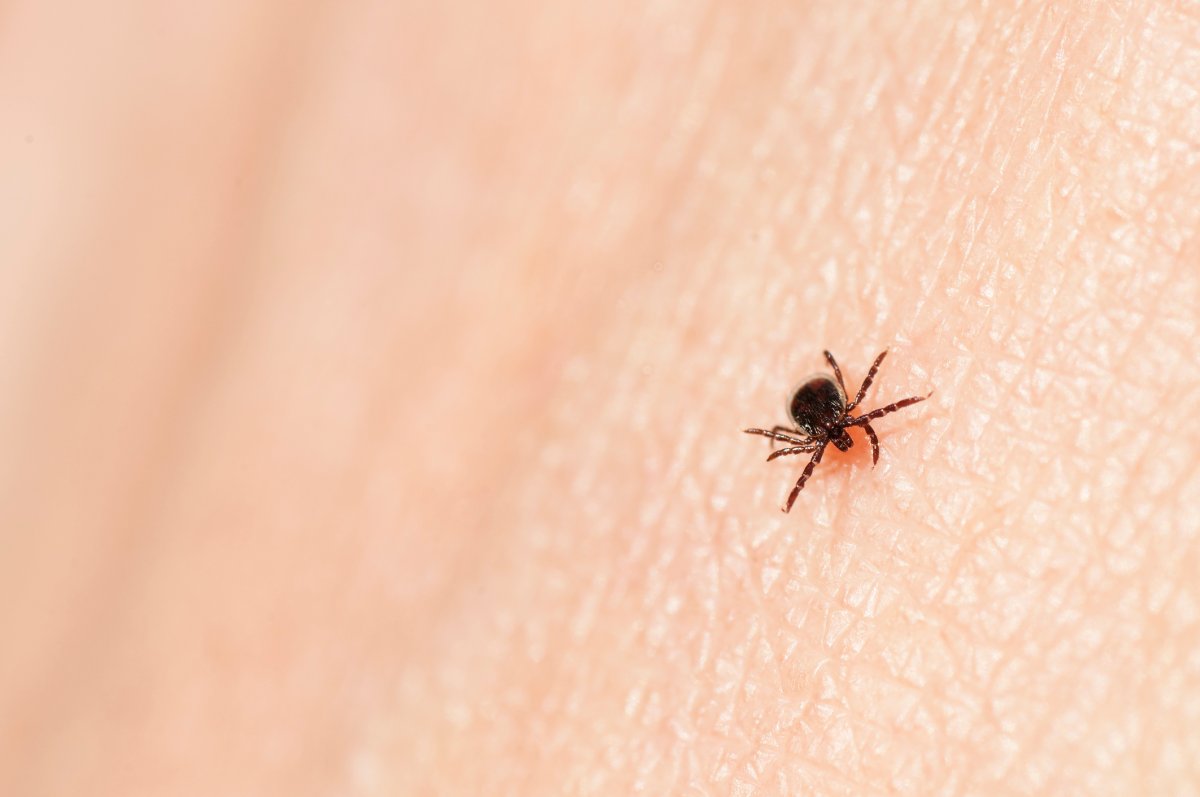With increasing warmth in the region comes reminders from local and provincial health officials about the risks of ticks and Lyme disease.

Public Health Ontario released an update on Thursday to its Lyme disease risk map, which details where there are known blacklegged tick populations in Ontario and estimated risk areas for Lyme disease.
Across southwestern Ontario, risk areas remained unchanged from the agency’s 2021 map, with the exception of Elgin County and the southwestern edge of Middlesex County.
“This year, there is a new risk area in Elgin County, it’s in Malahide Township. We wanted to flag that as being a newly identified risk area for 2022,” said Jessica Fiddy, public health inspector with Southwestern Public Health, the health unit which covers Elgin and Oxford counties.
The updated map shows areas of Central Elgin, including St. Thomas, now considered to be estimated risk areas for Lyme disease as a result of the Malahide addition.
“When we do the tick dragging — the location — they’ll extend it for a 20 kilometre radius from that dragging location. That’s why it seems to have extended quite a bit,” Fiddy explained of the map, which references data from the previous year.
“We did have a risk area identified a few years ago in Bayham, so that’s probably why it looks like it’s such a big area. But it was 20 kilometres that was added this year.”
Lambton Public Health issued a similar notice to the public on Thursday, saying that local health officials had identified Pinery Provincial Park and the surrounding 20 kilometres, including Port Franks, as high-risk areas for Lyme disease.
The higher-risk, they said, was due to increased blacklegged tick populations, and the number of ticks positive for Borrelia burgdorferi, the bacteria which causes Lyme disease.
According to the health unit, the bacteria Borrelia burgdorferi is spread through the bite of an infected blacklegged tick, also known as a deer tick. An infected tick needs to be attached for at least 24 hours for the bacteria to be transmitted, according to Health Canada.
A common early symptom of Lyme disease is a skin rash that expands from the site of the bite. Other early symptoms include fever, chills, fatigue, headache, swollen lymph nodes, and muscle and joint aches, Health Canada says. Early diagnosis and treatment can prevent complications.
“When people are walking through wooded areas or areas where ticks could be found, there is the potential that they could have come across ticks. They don’t jump or fly, but as you’re walking by, they can brush onto you,” Fiddy said.
Health officials advise residents to wear light-coloured, long-sleeved shirts and pants, both tucked, when going into areas where there may be ticks. Closed-toe shoes are also recommended, along with insect repellent containing DEET or Icaridin.
“If they do happen to find a tick … we always encourage a tick check when they’ve come in from these wooded areas where you are showering, towelling off to remove any loose ticks, and then checking yourself for ticks afterwards,” Fiddy said.
“And then If you do find a tick, remove it promptly, bring it in to the health unit and we can identify it … Knowing the type of tick that you have is very important.”

According to Public Health Ontario, there were 834 cases of Lyme disease in the province in 2020, with five in Elgin-Oxford, two in London-Middlesex, and two in Lambton County. Twenty-seven hospitalizations were reported province-wide.
The 2020 figures marked a decrease compared to 2019, when 1,182 cases and 37 hospitalizations were reported across the province, with six cases reported in Elgin-Oxford, eight in London-Middlesex, and two in Lambton.
Provincial data shows a steady increase in Lyme disease cases over the last decade, from 137 across the province in 2011 to 451 in 2015, and 1,038 in 2017. Cases fell to 645 in 2018 before rising in 2019.
The 2017 increase was attributed largely to three eastern Ontario health units which saw high rates of expansion in blacklegged tick populations, according to Public Health Ontario.









Comments